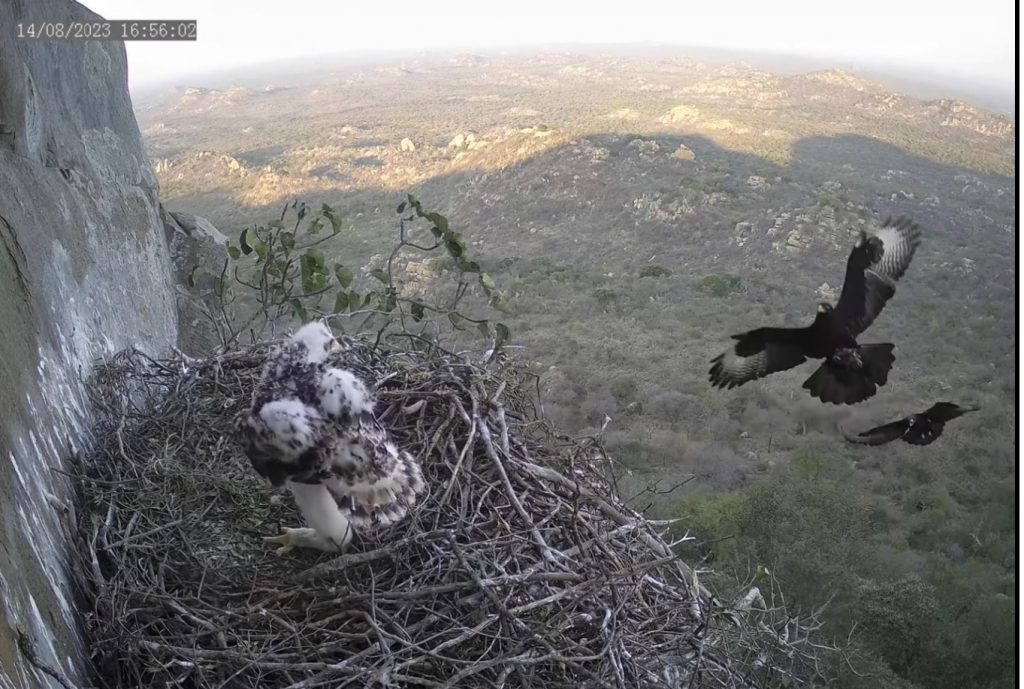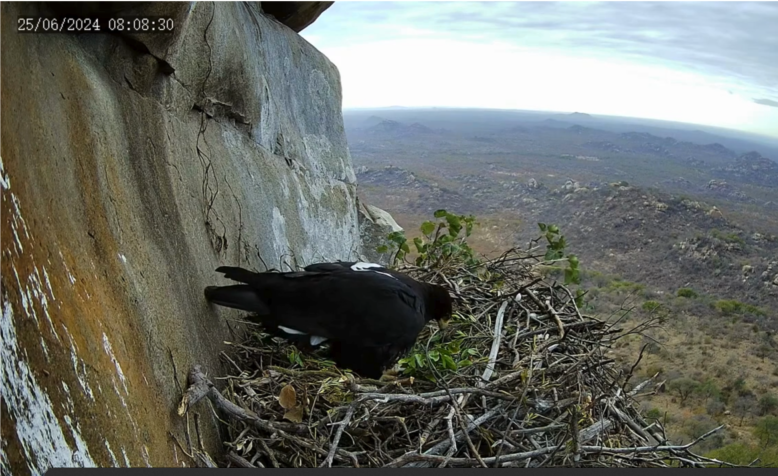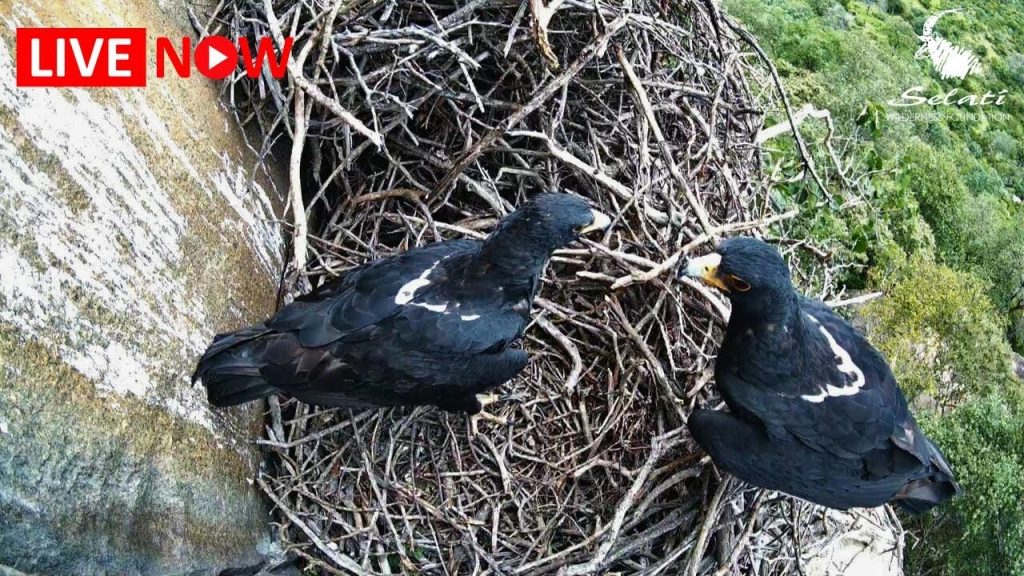SELATI'S VERREAUX'S EAGLES
The Selati Game Reserve is not just a sanctuary for iconic African fauna and flora but also serves as a vital refuge for one of Africa’s most enigmatic and under-studied birds of prey: the Verreaux’s Eagle. This majestic eagle, also known as the Black Eagle, represents an integral part of the complex ecological web that sustains life in this unique landscape. It’s not just about the eagles; it’s about preserving a vital part of an ecosystem increasingly stressed by human activities.
The Lillie hills within our reserve have long served as crucial breeding grounds for the Verreaux’s Eagles. This is not coincidental. These eagles prefer habitats like cliffs, rocky outcrops, and escarpments – conditions the Selati Game Reserve provides in abundance. Here, they find the optimal vantage points for hunting, contributing to the balance of the area’s ecosystem by naturally controlling populations of small to medium-sized mammals such as hyraxes and rock dassies.
The Verreaux’s Eagle is not merely another bird of prey; it symbolises the natural grandeur and resilience we aim to preserve and showcase. With wingspans of up to 2.4 metres and a keen predatory intelligence, these eagles are marvels of natural engineering. Beyond being an awe-inspiring sight, they carry cultural and spiritual significance in the African communities they inhabit.
However, like many other majestic creatures that call Africa home, the Verreaux’s Eagle faces challenges threatening its existence. Habitat loss, human interference and even persecution have led to its classification as a near-threatened species by the International Union for Conservation of Nature (IUCN). Given its importance to the ecosystems it inhabits and as a symbol of the natural heritage we’re committed to preserving, the Selati Wilderness Foundation finds it imperative to focus conservation efforts on this remarkable species.
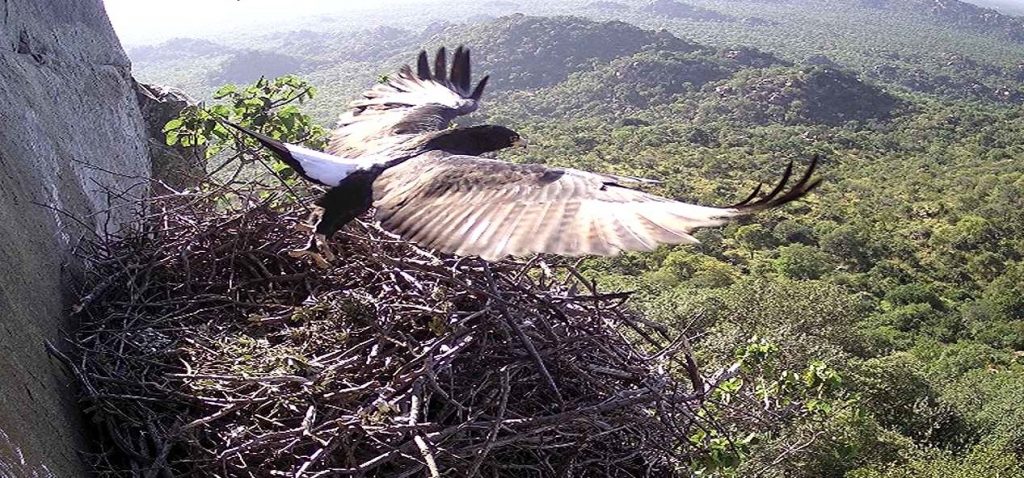
Verreaux’s Eagle nest on Selati
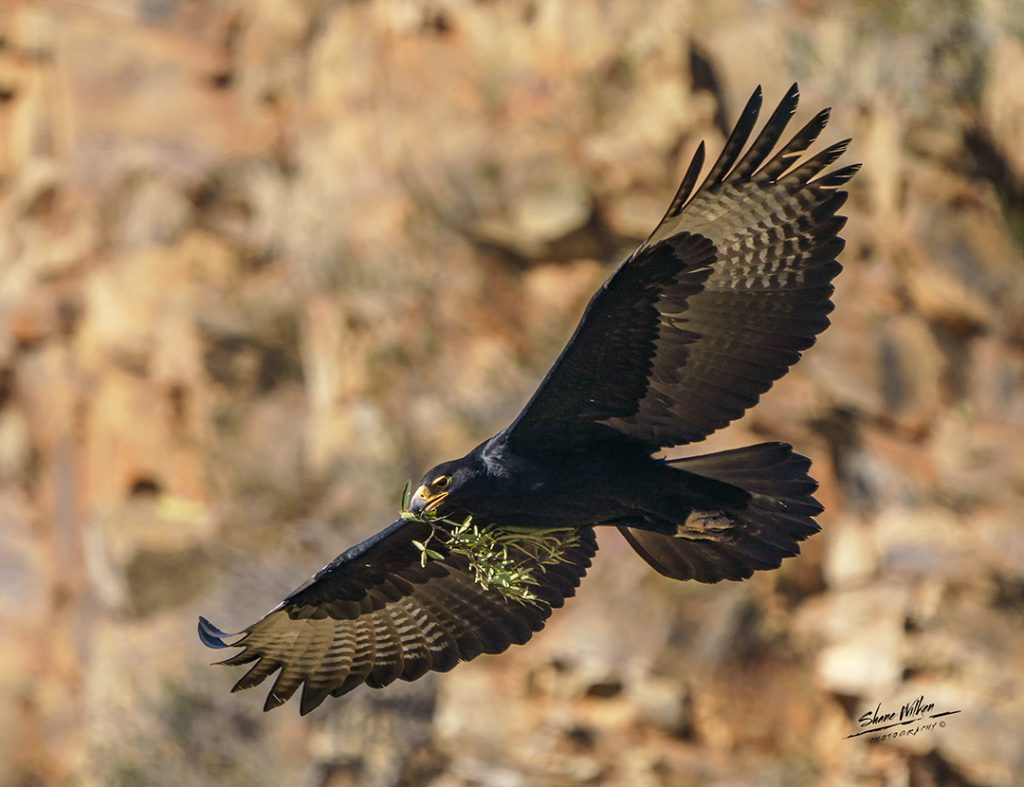
Photo credit – Shane Wilken
WELCOME TO SELATI'S VERREAUX'S EAGLE PROJECT
In 2023, the Selati Wilderness Foundation launched an innovative conservation initiative with a singular aim: to deepen our understanding of the Verreaux’s Eagles that inhabit the Selati Game Reserve. Utilising cutting-edge live-streaming technology, we offered an intimate view into the breeding behaviour of a pair of these extraordinary birds. As this remarkable project concludes, we invite you to reflect on the significant moments, challenges, and triumphs we’ve documented.
Verreaux’s Eagles typically breed once a year, raising one or occasionally two chicks. The breeding success of these eagles can vary, influenced by environmental factors and the challenges of chick-rearing. This year to deepen our understanding of these dynamics, we have installed a live-streaming camera system to hopefully further explore the behaviour at their nest day and night. This setup documents their entire breeding cycle – from nest preparation to the fledgling’s first flight- while minimising disturbance to the birds.
Witnessing these magnificent eagles nurture new life is truly fascinating. We are excited to once again offer this exclusive window into the natural world to bird enthusiasts globally. Through our live camera feeds, viewers can observe the eagles and actively contribute to their conservation by joining the conversation. Viewers can also make donations to the Selati Wilderness Foundation.
In partnership with Africam and explore.org, a new camera was installed at the nest site in February 2025. During the setup, it became clear that the eagle pair had started constructing a new nest just below the previous one. As a result, the old camera was left in place to monitor the original nest, while the new camera (equipped with sound) was positioned to capture activity at the new nest. We now eagerly anticipate what the 2025 breeding season will bring for our resident eagles.
IMPORTANT MILESTONES & CHALLENGES
JOIN OUR VERREAUX'S EAGLE WHATSAPP GROUP
Opt in and join our WhatsApp group for members. You will receive instant notifications from our research team on the ground so you’ll never miss an interesting moment at the nest site.
Scan the QR code via your mobile phone's QR scanner app >
Alternatively click on this link to join the group.
Don’t miss the chance to learn more about these fascinating birds, and help them survive and thrive in their natural habitat.

HOW YOUR SUPPORT MADE A DIFFERENCE
Your engagement, whether through a complimentary membership or a financial donation, has been invaluable. These contributions not only fuelled this year’s project but also promise to support future studies and conservation initiatives within the Selati Game Reserve.
Thank you for being part of this extraordinary experience.
Through targeted conservation initiatives like these, the Selati Wilderness Foundation aims to ensure that the Verreaux’s Eagles continue to thrive in the Selati Game Reserve for generations to come.
MAKE A DONATION
If you’re inspired by this project and wish to contribute further, you have the option to assist us by making a donation below. The proceeds from your contribution will go to the Selati Wilderness Foundation and will be deployed to further the conservation objectives of the organisation. Your contribution will go a long way towards protecting the Verreaux’s Eagles and other endangered species on the Selati Game Reserve.

